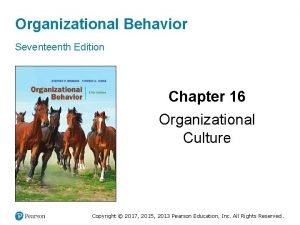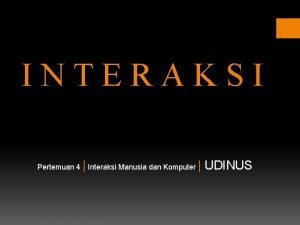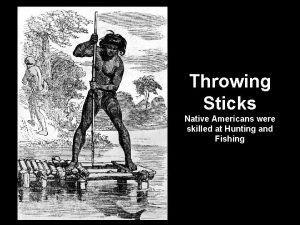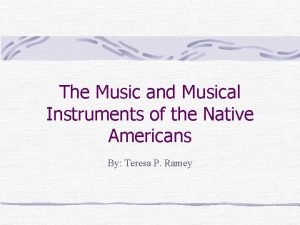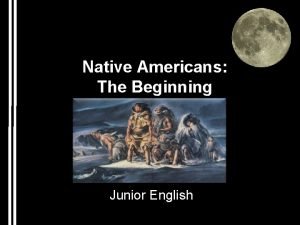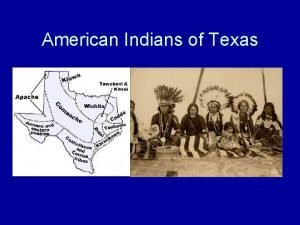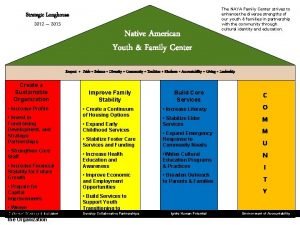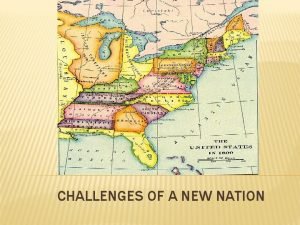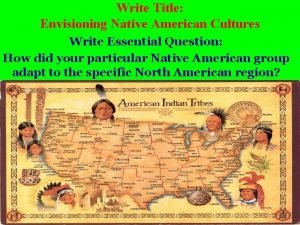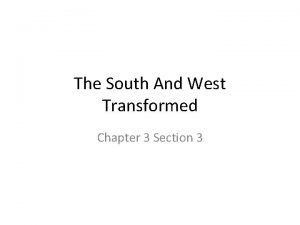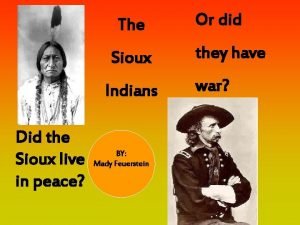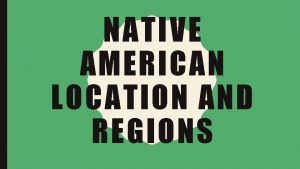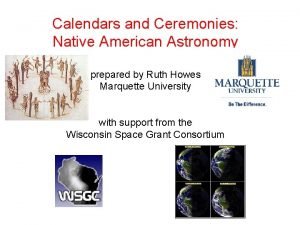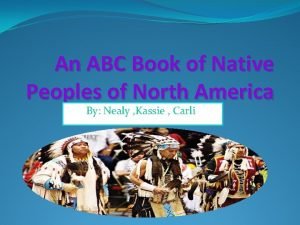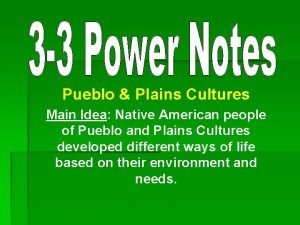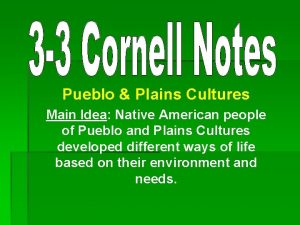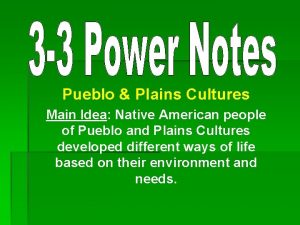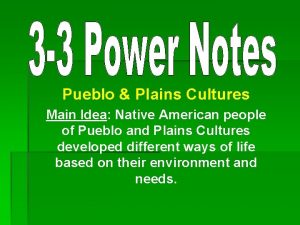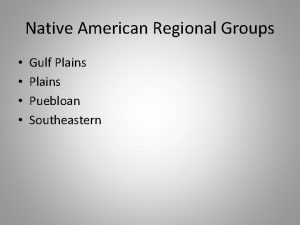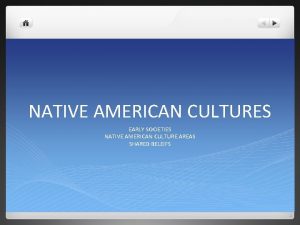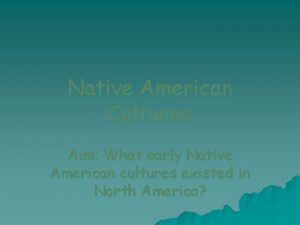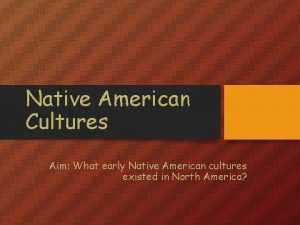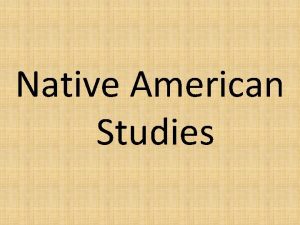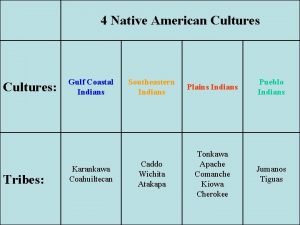Southeastern Gulf Cultures Main Idea Native American people



























- Slides: 27

Southeastern & Gulf Cultures Main Idea: Native American people of Southeastern and Gulf Cultures developed different ways of life based on their environment and needs.

Essential Questions n How does the environment affect the development of a society? n How did the American Indians adapt to and modify their environment?


Southeastern/Gulf Farmers & Gatherers n Some were farmers, others were mainly coastal fishers and still others gathered their food. *Based off that information, what can you tell me about the different progressions of society in the SE/Gulf cultures? ?

Southeastern Farmers

The Caddos • The Caddos settled in East Texas along the Coastal Plains. • They were highly advanced farmers and fishers. • Two confederacies of Caddo people, the Kadohadacho and Hasanai, lived in Texas. • Some confederacies were matrilineal; tracing their descent through their mothers *What is a confederacy? *What is the significance of them?

The Caddos They built permanent villages and became expert farmers. They practiced crop rotation. n The Caddo grew beans, corn, squash, melons and tobacco. They organized their tribes into 2 to 3 confederacies. n The Caddo built mounds and temples for religious events. n In addition to a religious and political structure the Caddo had healers and craftspeople. n

Caddo Round House-up to 50 feet tall, second level inside.

The Caddos They lived in domed-shaped huts, had an organized government system led by a chief, and greeted Europeans with the word Tejas, which means “friends”. • Smallpox eventually reduced their number; and in 1859 they were forced to move to present-day Oklahoma (i. e. Indian Territory) on a reservation. •



The Wichitas • • • The Wichitas moved from present-day Kansas to lands along the Trinity, Red, and Brazos Rivers. They hunted buffalo & farmed. Known for their tattoos around the eyes known as “raccoon eyes”. Women held leadership positions and shared work with the men. They traded with the French but often fought Spanish settlers, who tried to bring them into Spanish missions.

The Wichita used horses to hunt buffalo and deer. They lived in permanent villages, some building houses like the Caddo.


Gulf Gatherers

The Coahuiltecans lived a nomadic life moving from campsite to campsite in the dry, brushy land of the South Texas Plain. • They hunted smaller animals with bows and arrows and they gathered dried plants and ground them into flour. They also ate bugs and other insects. • Considered very primal. •

n They did not build permanent homes. They worked hard, but they liked to gather for feasting and dancing. Scavengers of the desert…ate anything that wiggled or crawled.

The Coahuiltecans Shamans, or people believed to have the power to summon spirits and cure the sick, were important to them. • By the time Texas became a state in 1845, most Coahuiltecans disappeared from the Gulf region. •


The Karankawas lived along the Southeast Gulf Coast and on islands between Galveston and Corpus Christi Bays. • They used their most prized possession—dugout canoes—for fishing and hunting small animals. •

The Karankawas n They were nomads who lived in temporary houses called wigwams. Karankawa wigwam

The Karankawa did not need much clothing. Their clothes were made out of deerskin or grass or moss. Men would pierce pieces of sharpened bone through their lips and chest to show macho they were. To keep the insects away, they rubbed alligator fat and dirt into their skin. Some reports say they were cannibals (eating human Taller Indians so they carried bows that were up flesh!). to 6 feet tall.

The Karankawas In the 1820 s, when North American settlers moved into the area, fighting with settlers erupted. • By the mid-1800 s, almost all Karankawas were displaced or killed. •

Why would Gulf culture Indians disappear more quickly than some of the other cultures?


Other SE/Gulf Groups • The Atakapans lived along the coast between Galveston Bay and the Sabine River. Very similar to the Karankawa, though some were farmers. • In the 1820 s the Cherokees moved to East Texas from parts of the U. S. and adopted the ways of the “white man” by learning English and taking English/American names. • Between 1795 and 1816, the Alabama-Coushatta nations moved to East Texas and settled on a reservation near Livingston.

 Southeastern and gulf cultures
Southeastern and gulf cultures Main idea and supporting details
Main idea and supporting details Organizational cultures often reflect ________.
Organizational cultures often reflect ________. Contoh gulf of evaluation and gulf of execution
Contoh gulf of evaluation and gulf of execution Central idea is
Central idea is Supporting idea adalah
Supporting idea adalah Is the main idea the theme
Is the main idea the theme Supporting and concluding sentences
Supporting and concluding sentences Native american throwing stick
Native american throwing stick Native american musical instruments
Native american musical instruments First people in the world
First people in the world Native american religious beliefs
Native american religious beliefs Characteristics of native american literature
Characteristics of native american literature Mikmaq medicine wheel
Mikmaq medicine wheel What are the characteristics of early american literature
What are the characteristics of early american literature Native american dwellings
Native american dwellings Sun explosion candy bar
Sun explosion candy bar Native american youth and family center
Native american youth and family center Native american connections housing
Native american connections housing Native american important facts
Native american important facts Native american tribes
Native american tribes What three circumstances hurt native americans
What three circumstances hurt native americans Sioux writing
Sioux writing Indian skywalkers
Indian skywalkers Native american tribes in the united states
Native american tribes in the united states Similarities between inca maya and aztec
Similarities between inca maya and aztec Native american calendars
Native american calendars Native american abc book
Native american abc book


